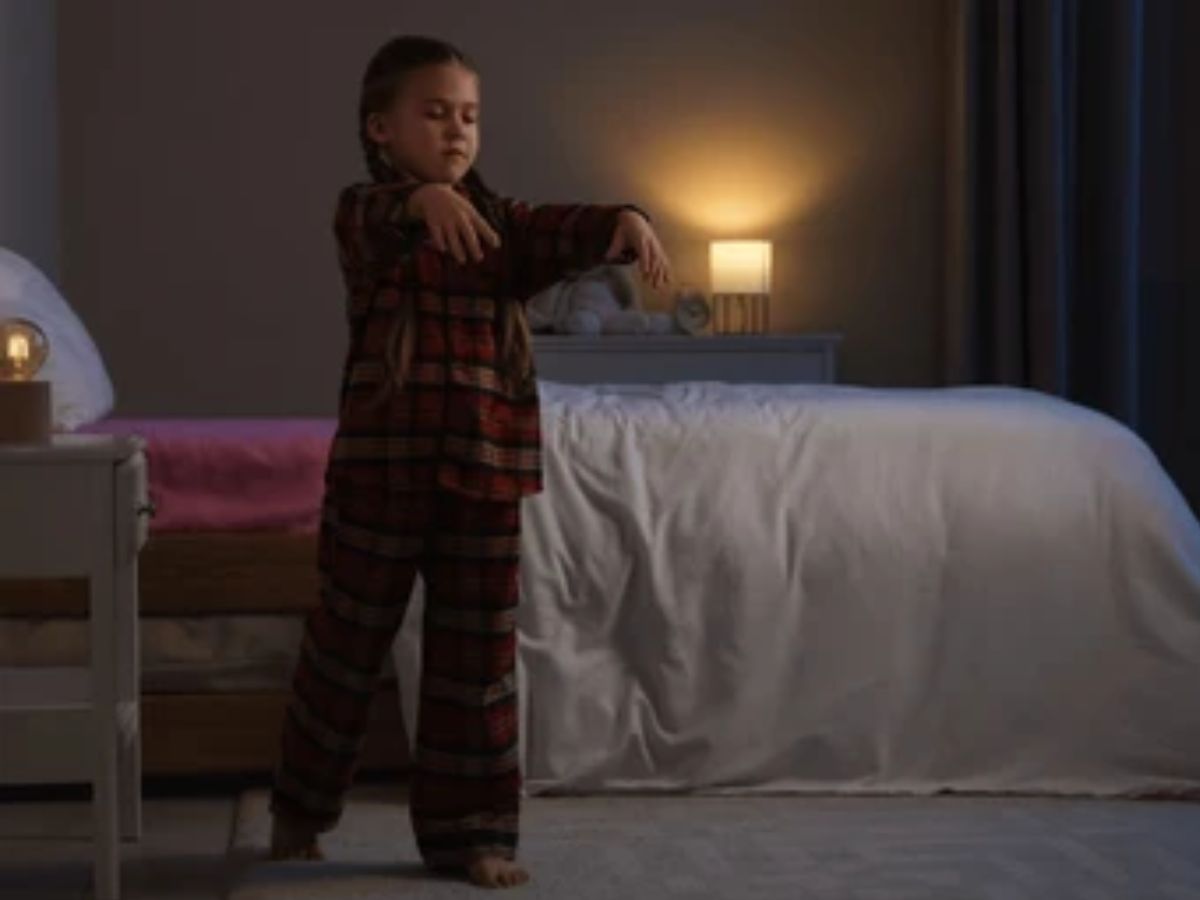
Sleepwalking (somnambulism) and sleep talking (somniloquy) can be odd sleep behaviors, and may be shocking and alarming. Both sleepwalking and sleep talking happen during deep Non-REM (NREM) sleep. During this part of the sleep cycle, the body is showing different levels of partial awakening where the conscious mind is missing. The brain may initiate automatic sleepwalking or sleep talking and act out behaviors autonomously without self-awareness. Knowing the cause can help manage and minimize the episodes.
Genetics
Sleepwalking and sleep talking seems to run in families and when a parent has experienced sleepwalking or sleep talking, the chances that their children will experience sleepwalking or sleep talking increases, highlighting a genetic predisposition.
Sleep Deprivation
Insufficient sleep, varying bedtimes, and jet lag can increase the likelihood of sleepwalking and sleep talking for the same reasons: disrupting the normal sleep cycle and increases brain arousal during sleep.
Psychological Stress
When stress levels are high – anxiety, stress, and emotion create disturbances in restful sleep, which frequently leads to sleepwalking and sleep talking episodes. Moving, trauma, or chronic life stress often worsens sleepwalking and talking episodes.
Medical and Environmental Triggers
Some physical illnesses (e.g. a fever that occurs with a child), medications (e.g. sedating medications, psychiatric medications), and substances (e.g. alcohol) can alter or disorganize sleep structure and act as a trigger or may increase parasomnia risk. Abnormal sleep, such as disorders that disrupt sleep such as obstructive sleep apnea and restless leg syndrome, can also affect risk. Environmental factors identify very noisy, extremely bright, or unfamiliar sleep locations as risk factors, especially children.
Developmental considerations
Sleepwalking, sleep talking, and other disorders occur more commonly in children as their brains develop and their sleep architecture shifts. Most children will outgrow sleepwalking or sleep talking as they develop.
When to Seek Professional Help
While most parasomnias are benign and self-limiting, there are situations in which talking to a professional might benefit a child’s situation, such as frequent parasomnia, potential harm or hazard to the child or family, parasomnia that onset in adulthood, and parasomnia that appear related to a neurologic condition, such as a seizure disorder, are all indications for engaging a health care professional.
If we consider these important factors it should help us to identify some triggers and help create a healthier and safer sleep.
This content is intended for informational purposes only and should not replace medical advice. Consult a healthcare professional for diagnosis or treatment of any sleep-related concerns.
Vani Verma is a content writer with over 2 years of experience in lifestyle, entertainment, health and digital media. She has a knack for creating engaging and research-driven content that resonates with readers, blending creativity with clarity. Passionate about media trends, culture, and storytelling, she strives to craft content that informs, inspires, and connects.
Brown University Shooting: At least two people were killed, 8 critically injured after a shooting was…
98 Students Fall Ill After Lizard Found In School Meal In Odisha’s Koraput District
At least 98 students fell ill on Saturday after consuming a contaminated school meal at…
‘This Is An ISIS Attack’: Donald Trump Vows Strong Response After 3 Americans Killed In Syria
Donald Trump: US President Donald Trump has vowed a strong response after 3 Americans were…